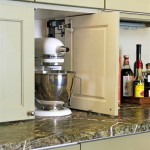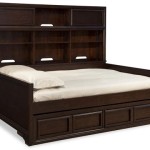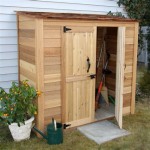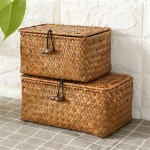The Best Way to Organize Food Storage
Efficient food storage goes beyond simply filling your pantry shelves. A well-organized system saves time, prevents food waste, and ensures easy access to the ingredients you need. This article explores practical strategies for organizing your food storage, from optimizing your pantry to implementing smart storage solutions for the refrigerator and freezer.
Maximizing Pantry Space: Storage Strategies for Efficiency
The pantry is the heart of your food storage, so optimizing its space is crucial. Here’s a breakdown of key principles:
1. Categorize and Group: The first step is categorization. Group similar items together – dry goods (grains, pasta, beans), canned goods, snacks, baking supplies, etc. This helps you quickly locate what you need.
2. Utilize Vertical Space: Maximize vertical space by using tiered shelves, stackable containers, and can organizers. These solutions allow you to store more items in a smaller footprint.
3. Employ Clear Containers: Transparent storage containers provide visual inventory, so you can see what's available without having to open every container. Labeling containers with the contents and dates helps with freshness tracking.
4. Implement a FIFO System: First-in, First-out (FIFO) is essential for reducing food waste. Store older items in front of newer ones to ensure they are used first.
5. Utilize Wall Space: Wall-mounted shelves, magnetic strips, and hooks can effectively store items off the floor, freeing up valuable shelf space.
Smart Storage Strategies for the Refrigerator
The refrigerator requires a different approach due to its temperature-controlled environment. Here's how to organize this vital space:
1. Designated Zones: Create zones for different types of food. For instance, the crisper drawers are perfect for fruits and vegetables, while the top shelves are ideal for items that require a colder temperature, like dairy and meat.
2. Utilize Drawers: Deep drawers are excellent for storing items like cheese, lunch meat, and leftovers. Consider drawer dividers to keep things separated and organized.
3. Maximize Door Space: The refrigerator door is often underutilized. Use dedicated door shelves for condiments, beverages, and other items that don’t require a specific temperature.
4. Clear Containers and Labeling: Transparent containers are beneficial for items stored in the refrigerator, allowing for easy identification. Labeling also helps with identifying leftovers and tracking expiration dates.
5. Implement a Clean-Out Routine: Regularly clean out your refrigerator, discarding expired items and wiping down shelves. This ensures a clean, organized, and fresh environment.
Optimizing Freezer Storage for Long-Term Food Preservation
The freezer is a valuable tool for storing food long-term, but organization is key to maximizing its potential.
1. Freeze-Safe Containers: Use freezer-safe containers with lids or heavy-duty freezer bags to prevent freezer burn and maintain quality.
2. Flat Packing: Flat packing is ideal for maximizing freezer space. Freeze items like sauces, soups, and leftovers in shallow containers to save space.
3. Labeling and Dating: Clearly label freezer items with their contents and the date of freezing. This helps with inventory management and ensures you use older items first.
4. Organize by Category: Categorize frozen items into groups such as meats, vegetables, fruits, and prepared meals. This makes it easier to locate specific items.
5. Regular Rotation: Regularly rotate frozen items, moving older items to the front to prevent them from getting lost or forgotten.

Organizing Your Food Storage

The Easiest Way To Organize Food Storage Containers Your Kitchen Frugally Day 7 Organizing Homelife

15 Ideas For Organising Your Food Storage Containers Blog Home Organisation The Organised You

How To Organize A Pantry Best Organizers And Tips 2024

5 Easy And Affordable Ways To Organize All Your Food Containers

The Easiest Way To Organize Food Storage Containers Your Kitchen Frugally Day 7 Organizing Homelife

The Step By Guide To Organising Your Food Storage Containers Blog Home Organisation Organised You Kitchen Organization

12 Ways To Organize Food Storage Containers Organization Obsessed

The Easiest Way To Organize Food Storage Containers Homes I Have Made

35 Best Ideas On How To Organize A Pantry
Related Posts








